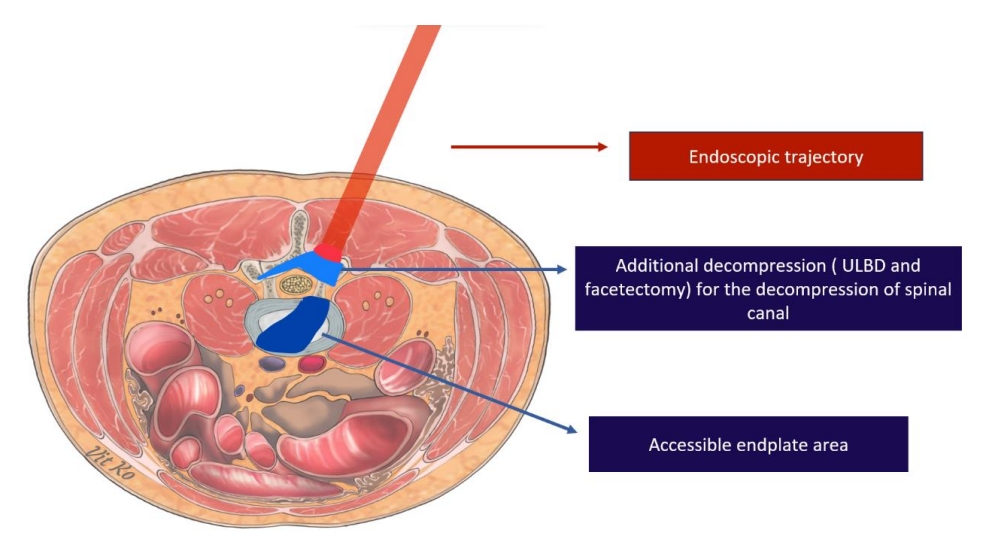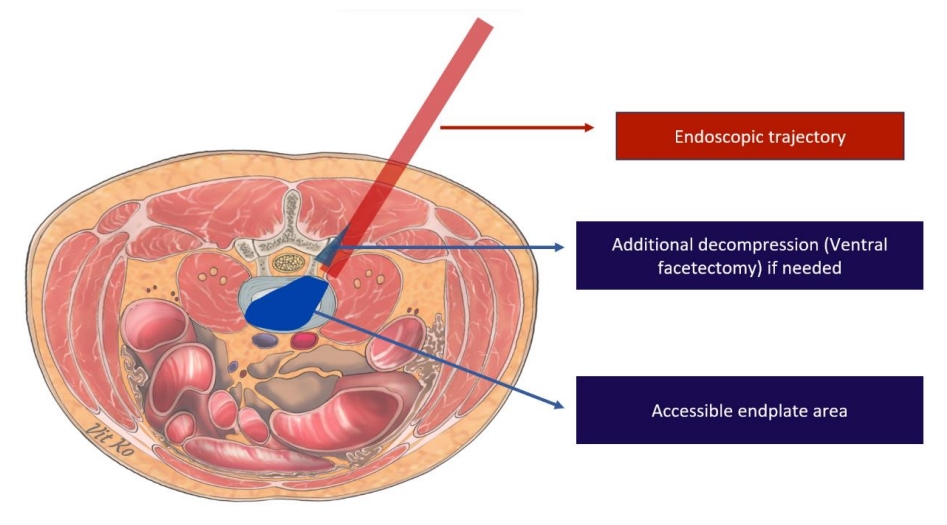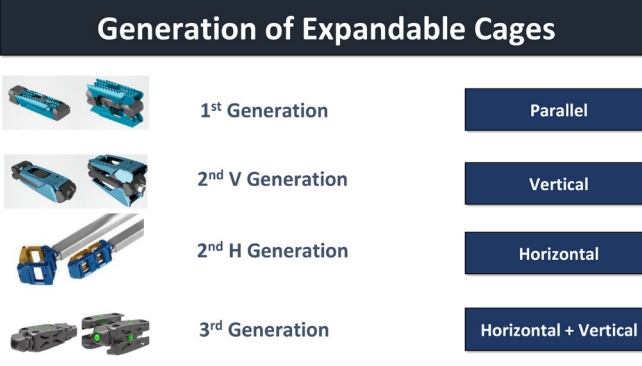1. Momin AA, Steinmetz MP. Evolution of minimally invasive lumbar spine surgery. World Neurosurg 2020;140:622-6.


2. Lee MJ, Mok J, Patel P. Transforaminal lumbar interbody fusion: traditional open versus minimally invasive techniques. J Am Acad Orthop Surg 2018;26:124-31.


4. Choi KC, Kim JS, Park CK. Percutaneous endoscopic lumbar discectomy as an alternative to open lumbar microdiscectomy for large lumbar disc herniation. Pain Physician 2016;19:E291-300.


6. Kang MS, You KH, Choi JY, et al. Minimally invasive transforaminal lumbar interbody fusion using the biportal endoscopic techniques versus microscopic tubular technique. Spine J 2021;21:2066-77.


8. Ruetten S, Komp M, Godolias G. An extreme lateral access for the surgery of lumbar disc herniations inside the spinal canal using the full-endoscopic uniportal transforaminal approach-technique and prospective results of 463 patients. Spine (Phila Pa 1976) 2005;30:2570-8.


10. Ruetten S, Komp M, Merk H, et al. Use of newly developed instruments and endoscopes: full-endoscopic resection of lumbar disc herniations via the interlaminar and lateral transforaminal approach. J Neurosurg Spine 2007;6:521-30.


11. Khandge AV, Sharma SB, Kim JS. The evolution of transforaminal endoscopic spine surgery. World Neurosurg 2021;145:643-56.


12. Ruetten S, Komp M. Endoscopic lumbar decompression. Neurosurg Clin N Am 2020;31:25-32.


15. Dewanngan NK, Yadav YR, Parihar VS, et al. Extent of decompression of lumbar spinal canal after endoscopic surgery. J Neurol Surg A Cent Eur Neurosurg 2017;78:541-7.


19. Ao S, Zheng W, Wu J, et al. Comparison of preliminary clinical outcomes between percutaneous endoscopic and minimally invasive transforaminal lumbar interbody fusion for lumbar degenerative diseases in a tertiary hospital: is percutaneous endoscopic procedure superior to MIS-TLIF? A prospective cohort study. Int J Surg 2020;76:136-43.


20. Wang MY, Grossman J. Endoscopic minimally invasive transforaminal interbody fusion without general anesthesia: initial clinical experience with 1-year follow-up. Neurosurg Focus 2016;40:E13.

22. Son S, Yoo BR, Lee SG, et al. Full-endoscopic versus minimally invasive lumbar interbody fusion for lumbar degenerative diseases: a systematic review and meta-analysis. J Korean Neurosurg Soc 2022;65:539-48.


23. Hu X, Yan L, Jin X, et al. Endoscopic lumbar interbody fusion, minimally invasive transforaminal lumbar interbody fusion, and open transforaminal lumbar interbody fusion for the treatment of lumbar degenerative diseases: a systematic review and network meta-analysis. Global Spine J 2023 Mar 31:21925682231168577doi: 10.1177/21925682231168577. [Epub].


24. Brusko GD, Wang MY. Endoscopic lumbar interbody fusion. Neurosurg Clin N Am 2020;31:17-24.


25. Ahn Y, Youn MS, Heo DH. Endoscopic transforaminal lumbar interbody fusion: a comprehensive review. Expert Rev Med Devices 2019;16:373-80.


29. He EX, Guo J, Ling QJ, et al. Application of a narrow-surface cage in full endoscopic minimally invasive transforaminal lumbar interbody fusion. Int J Surg 2017;42:83-9.


30. Lewandrowski KU. Surgical technique of endoscopic transforaminal decompression and fusion with a threaded expandable interbody fusion cage and a report of 24 cases. J Spine 2018;7:2.

33. Li Y, Dai Y, Wang B, et al. Full-endoscopic posterior lumbar interbody fusion via an interlaminar approach versus minimally invasive transforaminal lumbar interbody fusion: a preliminary retrospective study. World Neurosurg 2020;144:e475-82.


34. Garg B, Ahuja K, Mehta N, et al. Awake spinal fusion. JBJS Rev 2021 Jun 14 9(6):doi: 10.2106/JBJS.RVW.20.00163.


36. Lv Y, Chen M, Wang SL, et al. Endo-TLIF versus MIS-TLIF in 1-segment lumbar spondylolisthesis: a prospective randomized pilot study. Clin Neurol Neurosurg 2022;212:107082.


37. Zhu L, Cai T, Shan Y, et al. Comparison of clinical outcomes and complications between percutaneous endoscopic and minimally invasive transforaminal lumbar interbody fusion for degenerative lumbar disease: a systematic review and meta-analysis. Pain Physician 2021;24:441-52.


42. Ranger TA, Cicuttini FM, Jensen TS, et al. Are the size and composition of the paraspinal muscles associated with low back pain? A systematic review. Spine J 2017;17:1729-48.


44. Heo DH, Lee DC, Kim HS, et al. Clinical results and complications of endoscopic lumbar interbody fusion for lumbar degenerative disease: a meta-analysis. World Neurosurg 2021;145:396-404.


46. Kou Y, Chang J, Guan X, et al. Endoscopic lumbar interbody fusion and minimally invasive transforaminal lumbar interbody fusion for the treatment of lumbar degenerative diseases: a systematic review and meta-analysis. World Neurosurg 2021;152:e352-68.


48. Shi L, Ding T, Shi Y, et al. Comparison of the outcomes of minimally invasive transforaminal lumbar interbody fusion and endoscopic transforaminal lumbar interbody fusion for lumbar degenerative diseases: a retrospective matched case-control study. World Neurosurg 2022;167:e1231-40.


49. Heo DH, Lee DC, Park CK. Comparative analysis of three types of minimally invasive decompressive surgery for lumbar central stenosis: biportal endoscopy, uniportal endoscopy, and microsurgery. Neurosurg Focus 2019;46:E9.

55. Alvi MA, Kurian SJ, Wahood W, et al. Assessing the difference in clinical and radiologic outcomes between expandable cage and nonexpandable cage among patients undergoing minimally invasive transforaminal interbody fusion: a systematic review and meta-analysis. World Neurosurg 2019;127:596-606.e1.


66. Kim HS, Wu PH, Lee YJ, et al. Technical considerations of uniportal endoscopic posterolateral lumbar interbody fusion: a review of its early clinical results in application in adult degenerative scoliosis. World Neurosurg 2021;145:682-92.


67. Lee KK, Teo EC, Qiu TX, et al. Effect of facetectomy on lumbar spinal stability under sagittal plane loadings. Spine (Phila Pa 1976) 2004;29:1624-31.


70. Ishihama Y, Morimoto M, Tezuka F, et al. Full-endoscopic trans-kambin triangle lumbar interbody fusion: surgical technique and nomenclature. J Neurol Surg A Cent Eur Neurosurg 2022;83:308-13.


71. Cannestra AF, Peterson MD, Parker SR, et al. MIS expandable interbody spacers: a literature review and biomechanical comparison of an expandable MIS TLIF with conventional TLIF and ALIF. Spine (Phila Pa 1976) 2016;41 Suppl 8:S44-9.

73. Lee S, Kim JG, Kim HJ. Comparison of surgical outcomes between lumbar interbody fusions using expandable and static cages: a systematic review and meta-analysis. Spine J 2023;23:1593-601.


74. Stickley C, Philipp T, Wang E, et al. Expandable cages increase the risk of intraoperative subsidence but do not improve perioperative outcomes in single level transforaminal lumbar interbody fusion. Spine J 2021;21:37-44.


75. Woodward J, Koro L, Richards D, et al. Expandable versus static transforaminal lumbar interbody fusion cages: 1-year radiographic parameters and patient-reported outcomes. World Neurosurg 2022;159:e1-7.


79. Akbary K, Kim JS. Recent technical advancements of endoscopic spine surgery with disparate or disruptive technologies and patents. World Neurosurg 2021;145:693-701.


82. Hussain I, Hofstetter CP, Wang MY. Innovations in spinal endoscopy. World Neurosurg 2022;160:138-48.


83. Chang M, Wang L, Yuan S, et al. Percutaneous endoscopic robot-assisted transforaminal lumbar interbody fusion (PE RA-TLIF) for lumbar spondylolisthesis: a technical note and two years clinical results. Pain Physician 2022;25:E73-86.

84. Muhlestein WE, Strong MJ, Yee TJ, et al. Commentary: augmented reality assisted endoscopic transforaminal lumbar interbody fusion: 2-dimensional operative video. Oper Neurosurg (Hagerstown) 2022;22:e66-7.


88. Schizas C, Theumann N, Burn A, et al. Qualitative grading of severity of lumbar spinal stenosis based on the morphology of the dural sac on magnetic resonance images. Spine (Phila Pa 1976) 2010;35:1919-24.


89. Derman PB, Yusufbekov R, Braaksma B. Device profile of the FlareHawk interbody fusion system, an endplate-conforming multi-planar expandable lumbar interbody fusion cage. Expert Rev Med Devices 2023;20:357-64.




































